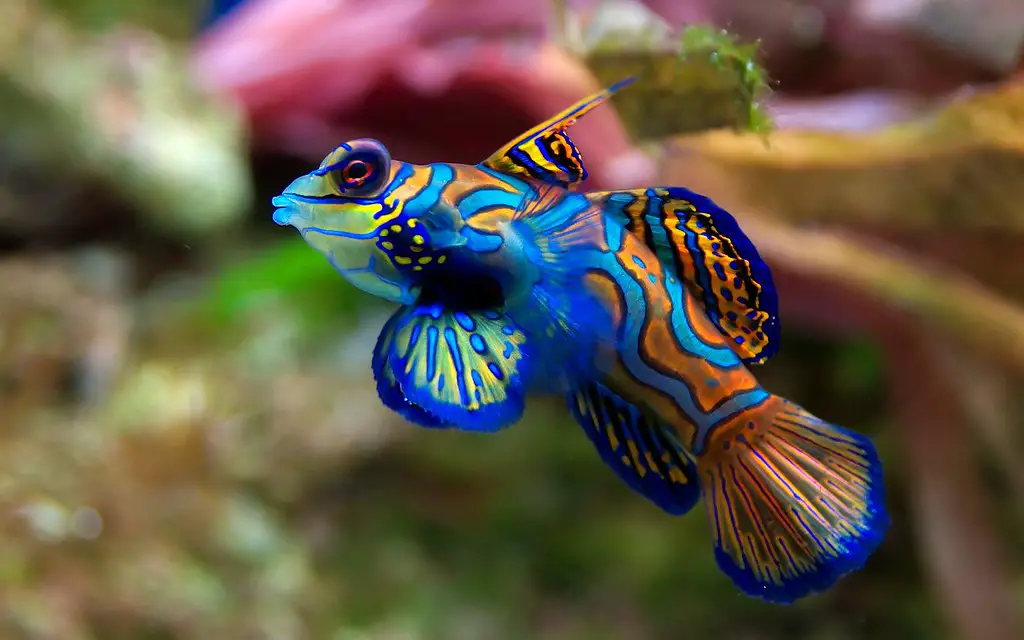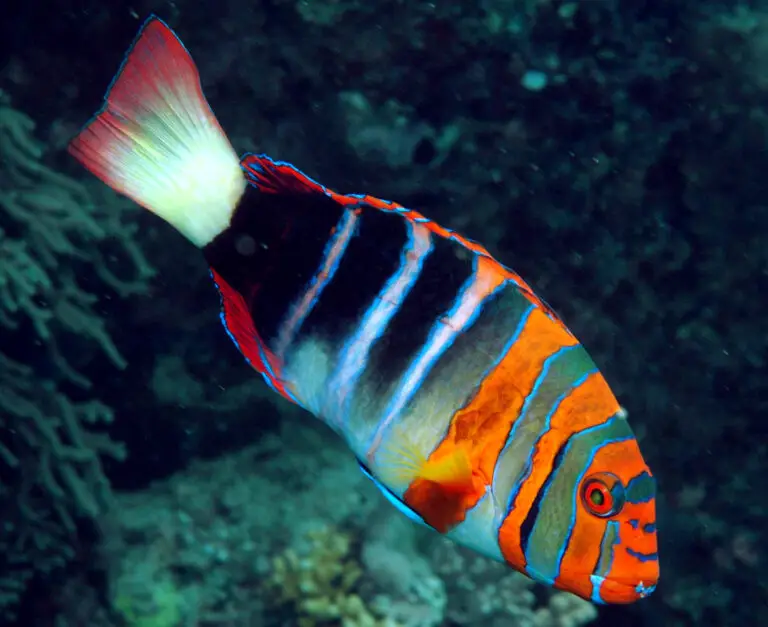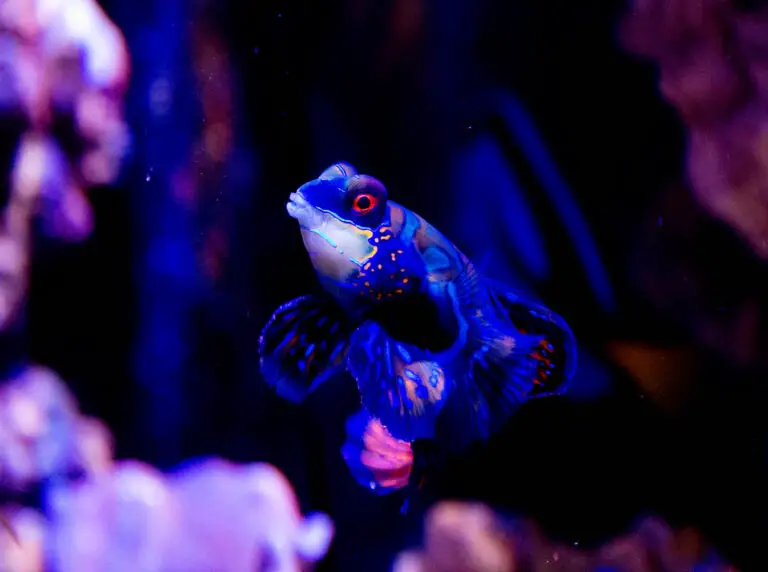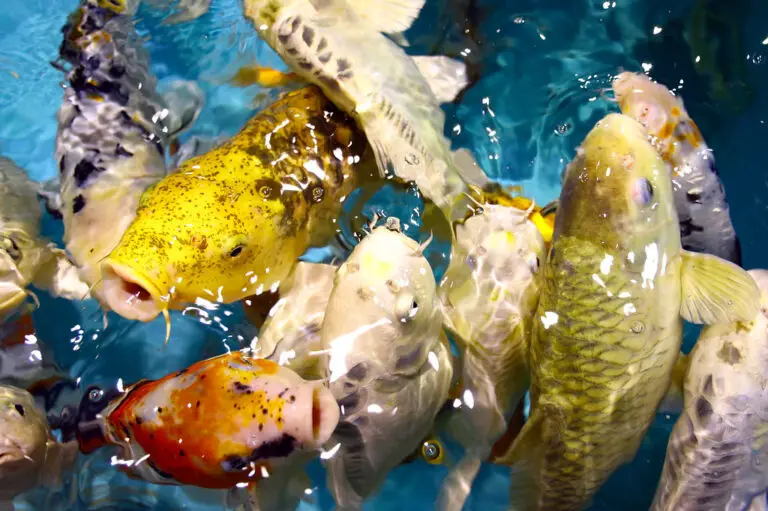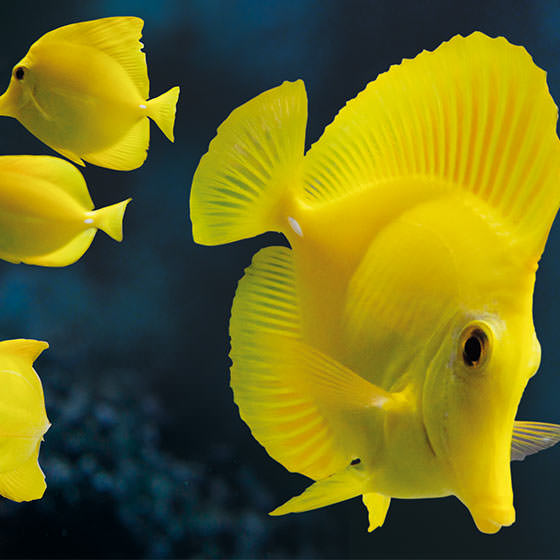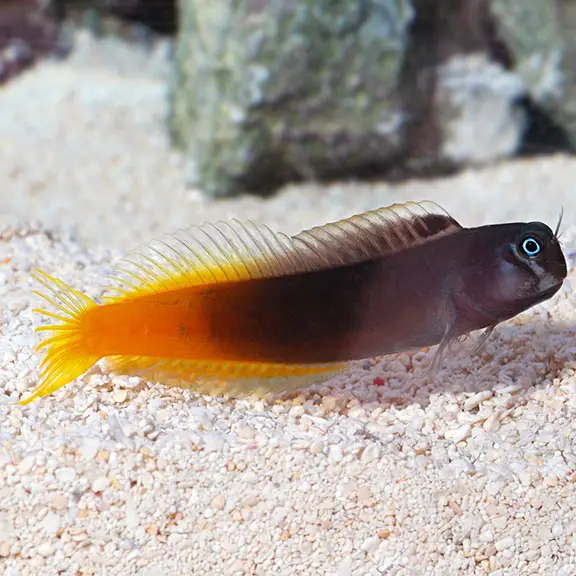Exploring the Mandarinfish: Beauty and Mystery in Saltwater Aquariums
Immersing oneself in the captivating world of saltwater aquariums is a pursuit of exquisite beauty and a touch of the enigmatic. Among the myriad of marine life one can select for their aquatic wonderland, the Mandarinfish stands as a gem—a symbol of vibrant color and an aura of mystery. For aquarium aficionados, this member of the dragonet family is an ambition, a testament to precision in husbandry and a dedication to maintaining a thriving marine ecosystem.
In this deep-dive into the wonder of Mandarinfish, we’ll unravel the secrets behind their hypnotic allure, their delicate nature, and how to foster their vivid presence within your saltwater haven.
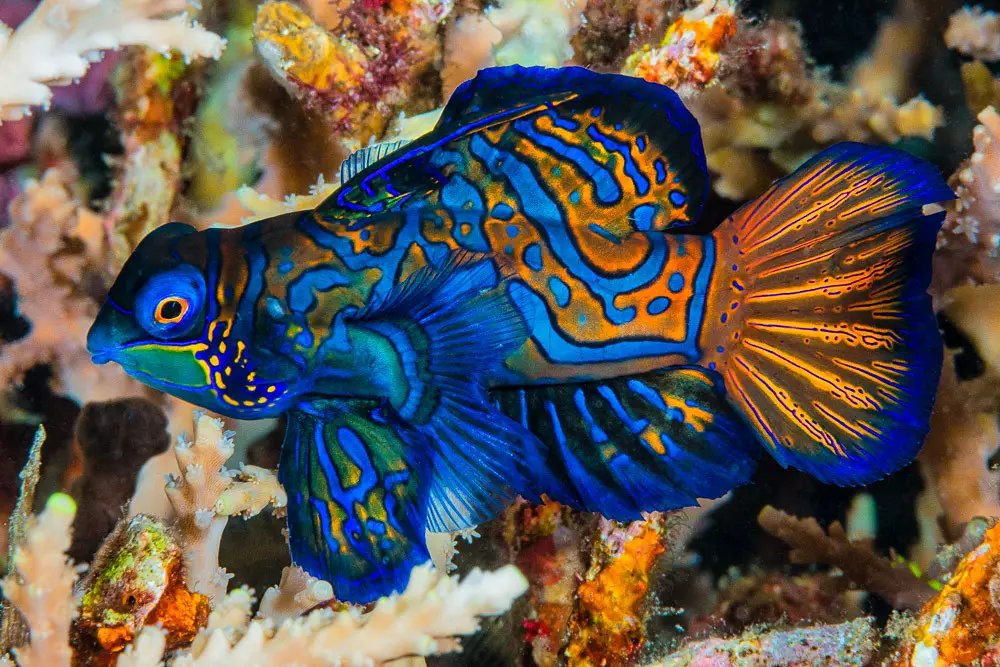
The Mandarinfish: A Closer Look
The Mandarinfish, or Synchiropus splendidus, is renowned for its kaleidoscopic hues, reminiscent of the ripest oranges and the most luminous shades of blue. A native of the Pacific Ocean, these fish are often found in the more sheltered parts of coral reefs, away from the current.
The Physical Marvel:
Mandarinfish are characterized by their small size, reaching an average length of about 6cm to 10cm. Their bodies are both flamboyant and sleek, with a kaleidoscope of colors that often leave first-time observers spellbound. The intricacy of their designs can appear as though an artist has painstakingly painted each scale with the precision of the rarest brushstroke.
Natural Habitat and Behaviors:
In the wild, Mandarinfish are known to be slow-moving and sedentary fish, meandering through the nooks and crannies of the reefs where they reside. They prefer the sandy bottom of the reef in shallow waters, typically at a depth of 1 to 17 meters.
Challenges and Considerations
Keeping Mandarinfish in a saltwater aquarium is not for the faint-hearted aquarist. Despite their diminutive size, they require specialized care and an environment that closely mimics their natural habitat.
Feeding the Jewel:
One of the most significant hurdles in maintaining a Mandarinfish is their diet. These fish are picky eaters, preying primarily on small crustaceans such as copepods and amphipods. Consequently, simply sprinkling flake food into the tank will not suffice. For those who wish to nurture a Mandarinfish, establishing a large population of live food in the aquarium is paramount.
Tank Setup & Compatibility:
The tank for a Mandarinfish must be mature, ideally six months old at minimum, to support the necessary population of live food. Additionally, Mandarinfish are peaceful and must be housed in a species-specific tank or with similarly docile species. Aggressive tankmates or species that occupy the same niche in the ecosystem can lead to competition for food and stress for the Mandarinfish.
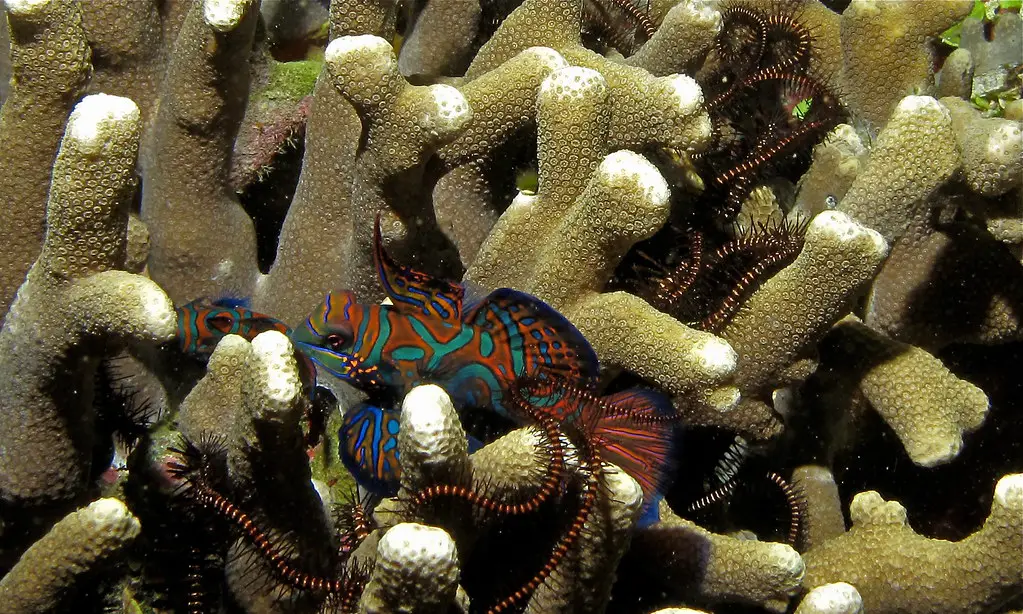
Tips for Keeping Mandarinfish
Exacting standards must be met to sustain Mandarinfish successfully. Here are vital tips to ensure your Mandarinfish thrives in captivity:
Precise Tank Conditions
Stability in water parameters is critical. Mandarinfish require a stable, mature, and well-maintained marine environment. The pH should be kept between 8.1 and 8.4, and the specific gravity should be around 1.025. Strict water quality in terms of ammonia, nitrate, and nitrite levels ensures the health and longevity of these magnificent creatures.
Live Food Strategies
Cultivating a thriving colony of live food in the tank can be done through various methods such as refugiums or live rock. Additionally, infrequent feeding of these fish can be harmful due to their large stomach, which can lead to overeating and bloat. Consequently, offering them small, frequent meals allows for better digestion and long-term health.
Mandarinfish in Aquascaping
In terms of aesthetics, few can rival the Mandarinfish. The strategic placement of these fish within an aquascape can elevate the beauty of a reef tank. Their bright and varied coloration adds a burst of vivid life against the backdrop of the coral reef, making them a centerpiece in any marine environment.
Compatibility with Coral and Invertebrates:
In conjunction with their vibrant hues, Mandarinfish are safe to keep with corals and invertebrates. Their behavior is such that they do not disturb or feed on the reef, harmonizing with the living tapestry of the aquatic world.
However, the addition of a Mandarinfish to an existing reef tank should be approached with careful consideration. Any territorial fish should be monitored, and the tank’s overall population should remain in balance to prevent over-competition for food sources.
Conclusion
In conclusion, the Mandarinfish is a testament to diversity and visual splendor in the marine realm. By carefully considering their needs and behaviors, aquarists can cultivate a slice of the ocean’s wonder within the confines of an aquarium. While daunting in some respects, the rewards of keeping Mandarinfish are immeasurable, offering enthusiasts a living masterpiece to admire and cherish.
For those willing to venture into the vibrant world of Mandarinfish keeping, the guidance provided in this exploration will serve as a compass, guiding you towards an experience that encapsulates the beauty and mystery of the underwater world.
